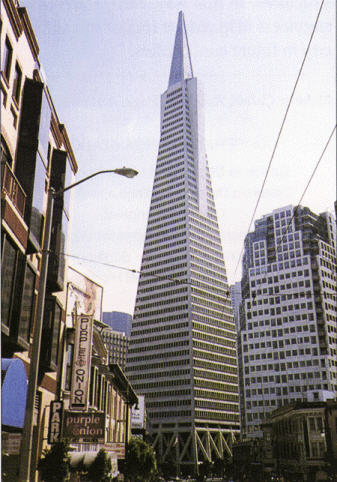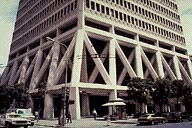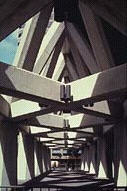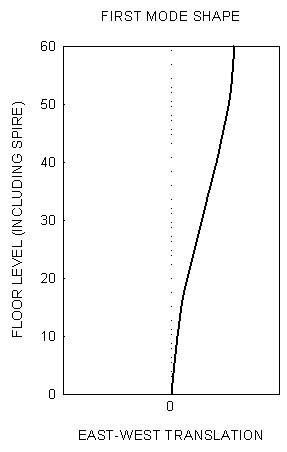

IntroductionThe Transamerica Pyramid is San Francisco's tallest building. Architect William Pereira designed this building.The Pyramid has 49 stories and a 212 foot spire. The height from the apex to the ground is 845 feet. The base width is 175 feet.The pyramid is flanked by a set of structures that look like wings. These structures start at the 29th floor and are both for form and function. The eastern wing is an elevator shaft. The western wing has a stairwell.The unique structural feature of this tapered building is the truss system above the first floor, as shown in Figures 2 and 3.Note that that photos in Figures 2 and 3 are courtesy of the Earthquake Engineering Research Center, University of California, Berkeley. |
 |
 |
The truss system supports both vertical and horizontal loading. The building is carefully engineered to take large horizontal base shear forces. Note that the nearby San Andreas and Hayward Faults are sources of major earthquakes. |

The overhead X-bracing resists torsional movement of the building about its vertical axis.In addition to the exterior frames, four interior frames in each direction extend up to the 17th floor and two interior frames in each direction continue to the 45th floor.The building is constructed of steel, reinforced concrete, and glass.Loma Prieta EarthquakeThe Transamerica Pyramid successfully withstood the Loma Prieta earthquake as reported in Reference 2:The 1989 Loma Prieta earthquake of magnitude 7.1 struck the Santa Cruz Mountains in California. Sixty miles away, in downtown San Francisco, the 49 story Transamerica building shook for over a minute. During the quake, the top story swayed over 12 inches from side to side. Yet the building was undamaged and no one was seriously injured.Modal Natural FrequenciesThe natural frequencies of the Transamerica Pyramid are given in Table 1. These frequencies were obtained by measurement as documented in Reference 2. |
Table 1. Transamerica Pyramid Natural Frequencies |
|||
Mode |
East-West(Hz) |
North-South(Hz) |
Torsion(Hz) |
1 |
0.330 |
0.337 |
0.447 |
2 |
0.616 |
0.630 |
0.814 |
3 |
0.843 |
0.880 |
1.06 |
4 |
1.10 |
1.11 |
1.27 |
5 |
1.50 |
1.52 |
- |
6 |
1.72 |
1.73 |
- |
